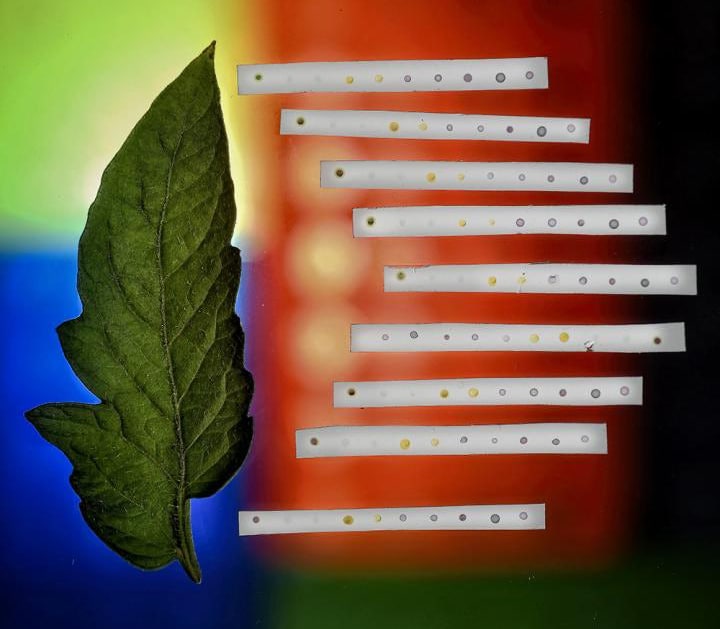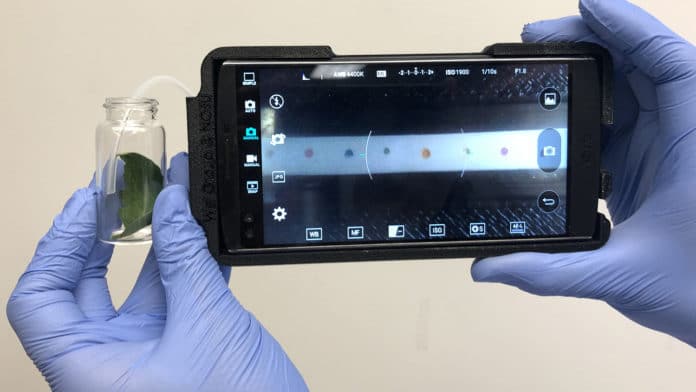Every plant releases volatile organic compounds (VOCs) as they ‘breathe’ through the pores in their leaves. But when a plant is diseased, the type and concentration of those VOCs change.
A new smartphone-based portable technology analyzes those chemicals within a fraction of minutes, detecting and identifying diseases that may be indicated. Developed by the scientists at North Carolina State University, the handheld device – which is designed to be attached to farmer’s smartphone, sitting over the top of its camera – works by sampling the airborne VOCs that plants release.
Researchers say each disease has its own signature profile of VOCs. So, by determining the type and concentration of VOCs released by the plants, you can determine if a plant is diseased and if it is diseased which disease it has.
Current methods of diagnosing diseases in plants take ‘days or week’ as some samples have to be sent into the lab, where the sample may have to wait for molecular analysis to take place.
“Our technology will help farmers identify diseases more quickly, so they can limit the spread of the disease and related crop damage,” says Jean Ristaino, Professor of Plant Pathology at NC State and co-author of the study.
How the technology works?
If the farmer suspects that a plant may be diseased, he or she would have to place a leaf of that plant into a capped test tube for 15 minutes to catch compounds released while it breathes. After this incubation period when the cap is removed, the gas from the tube can then be pumped into a chamber in the reader device connected to a smartphone.

The device contains a paper strip embedded with chemical reagents that change color when they come into contact with a specific chemical group. And by evaluating the resulting color patterns on the strip, the farmer can identify specific diseases.
“For this technology to work, we had to develop reagents that could be embedded in the paper strips,” says Zheng Li, a postdoctoral researcher at NC State. “About half of the reagents were off-the-shelf organic dyes, but the other half was gold nanoparticles that we functionalized to respond to specific chemical groups. These functionalized nanoparticles allow us to be more precise in detecting various types of VOCs.”
Testing:
The portable device has been successfully used to identify 10 different plants VOCs so far. It was used to detect the pathogen which caused the Irish famine two days after they infected tomatoes with the disease, according to the university.
“This kind of innovation is an integral part of the goals of the NC State Plant Sciences Initiative, which aims to develop new technologies that will improve food production through interdisciplinary science,” Wei says. Some improvements can be made into the device by developing tests for specific regions to help identify diseases that are common in particular locations.
There is no such reader device is available for sale in the market, according to the researchers and “We are now ready to scale up the technology,” they say. The paper is published in the journal Nature Plants.
